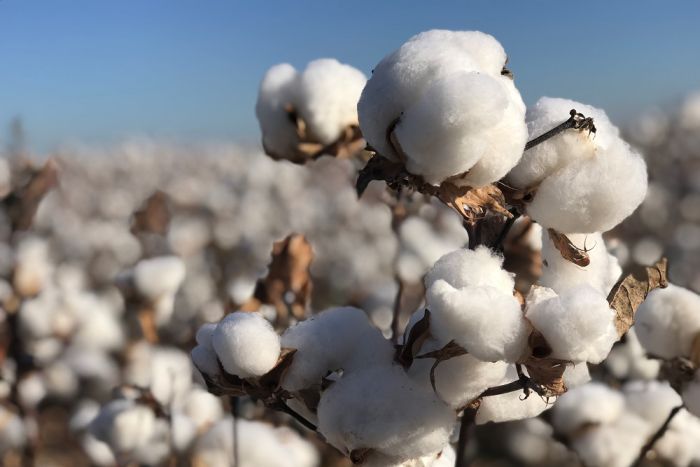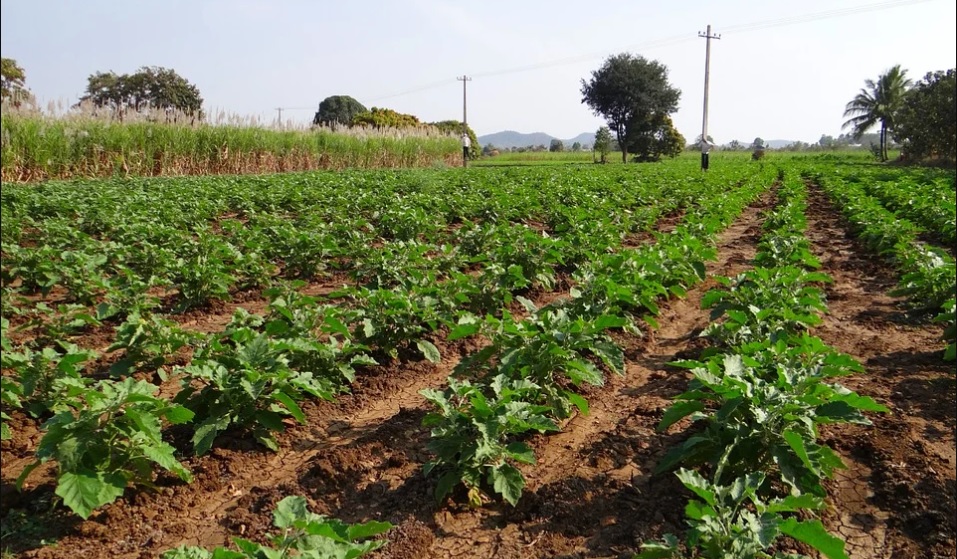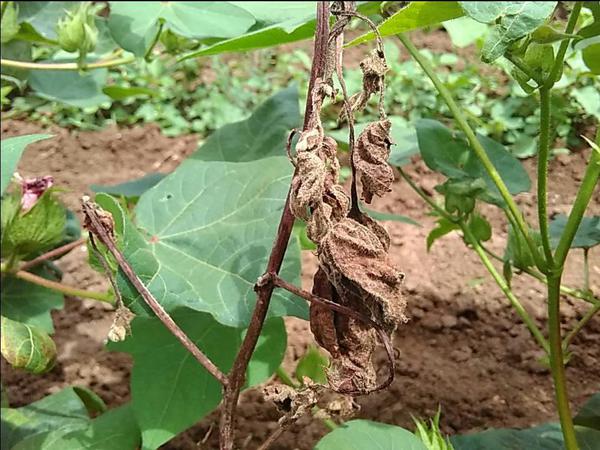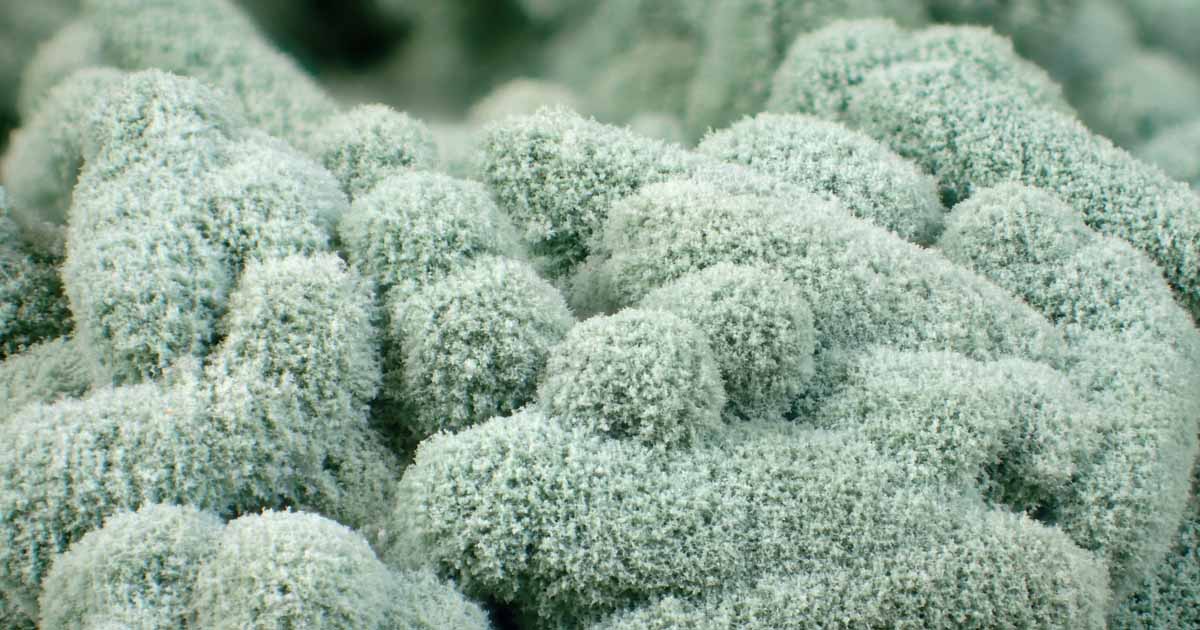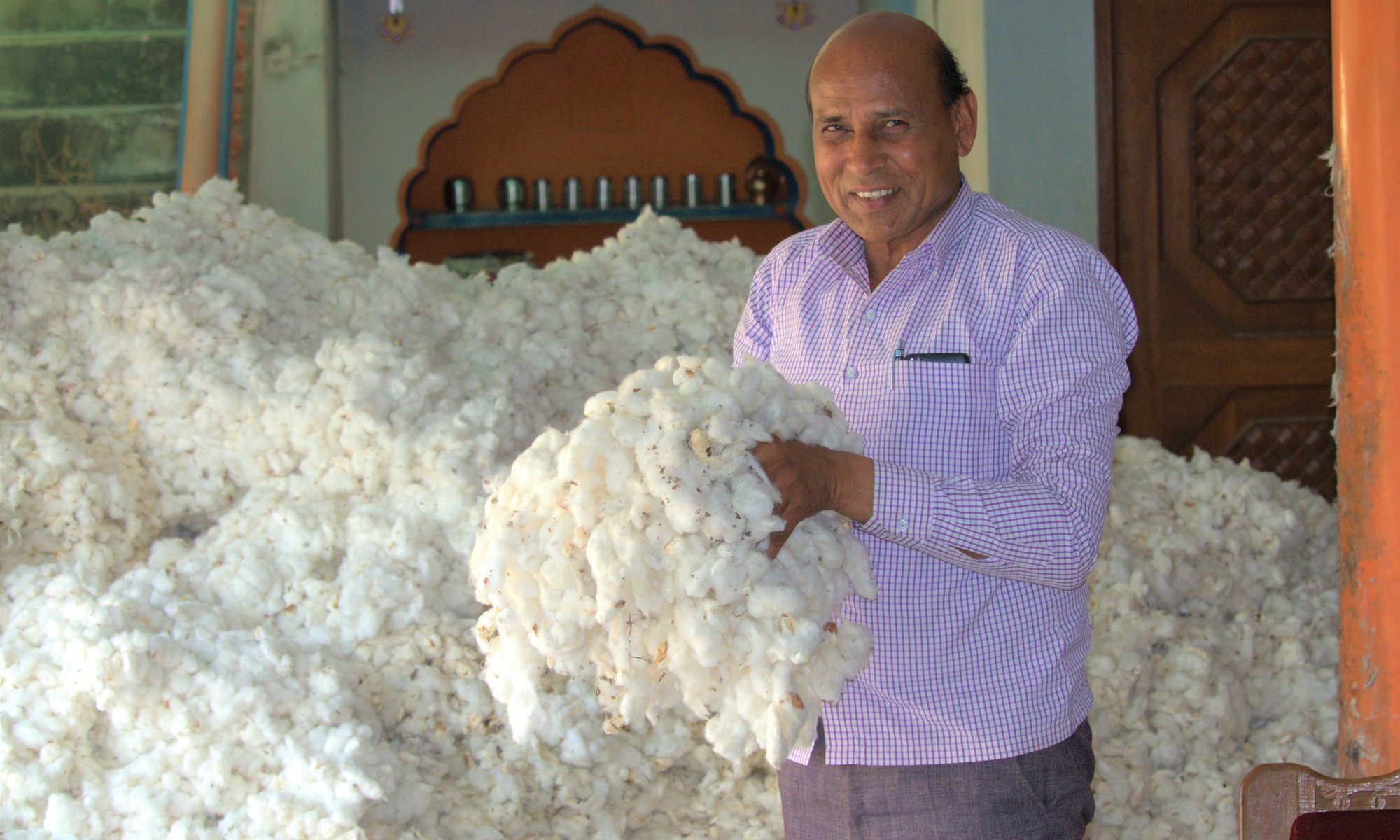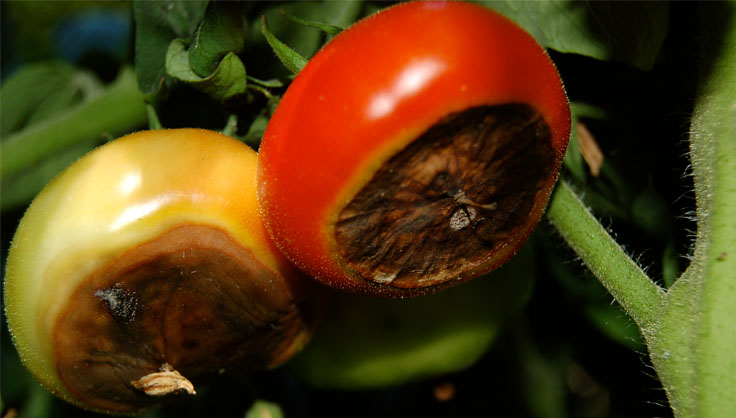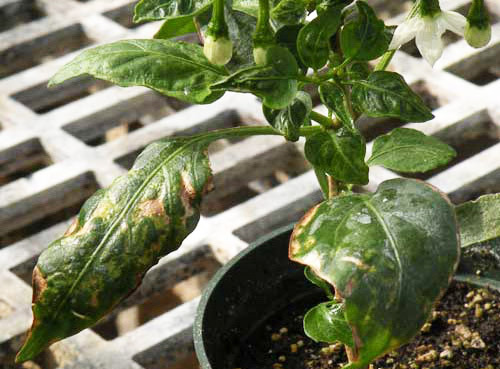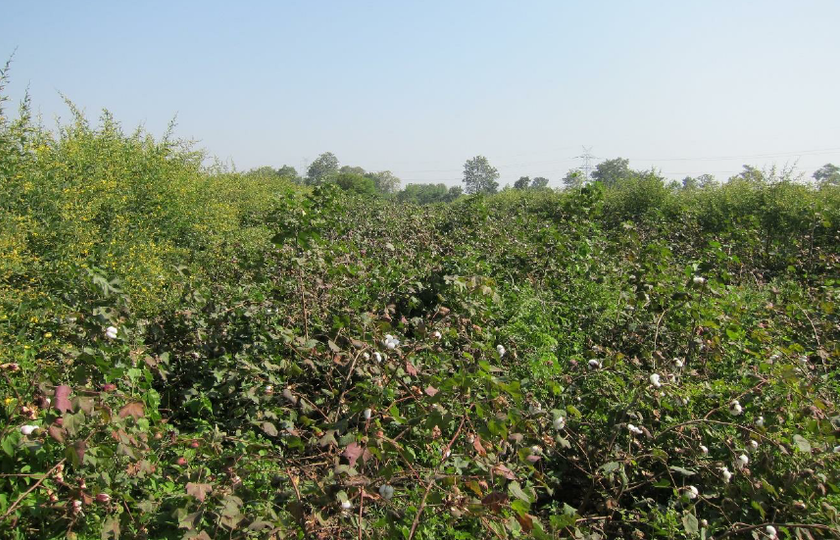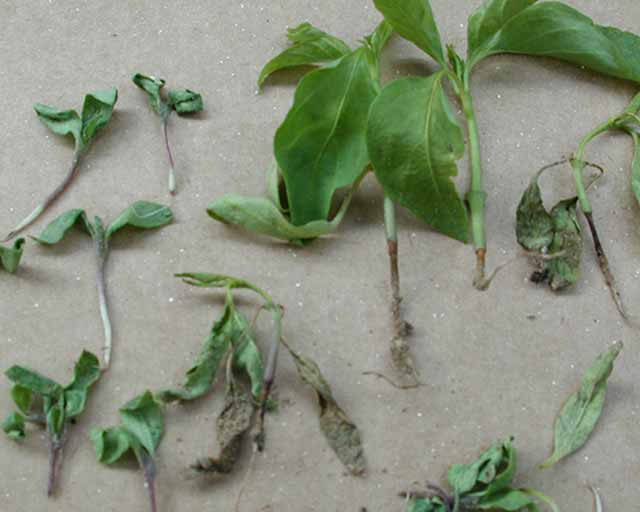- Some seeds do not grow after 10 days of sowing cotton in the field and some plants die after growing.
- This can happen due to many reasons such as rotting of seeds, sowing the seeds in more depth, eating of seeds by any insect or not getting enough moisture, etc.
- In these empty places, there is a direct effect on production if the plant does not grow, so seeds should be sown again at these places. This action is called Gap Filling.
- The distance between the plants in the queues in the cotton field should be the same. The process of filling this space is called Gap Filling.
- Gap filling keeps the distance between the plants the same. Due to which the production of cotton is good.
- On the other hand, if more than one seed falls at the same place at the time of sowing, more plants grow at the same place.
- If these plants are not removed timely, then it directly affects our production.
- Therefore, the removal of these extra plants is called Thinning. In the cotton crop, Thinning is done 15 days after sowing. So that the plants get the right amount of manure and fertilizer and the plants get proper growth.
Outbreak of nematode in Brinjal crop
- Due to nematodes in the soil, nodes are formed in the roots of brinjal plants.
- Due to its outbreak, the roots of the plants are not able to absorb nutrients. Due to this, there is a big decrease in the number of flowers and fruits.
- Leaves start to turn yellow and the entire plant remains dwarf.
- The plant dies after dying due to excess infection.
- Do not plant brinjal, chilli, and tomato crops for 2-3 years in the field where problems already appear.
- Do deep plowing in the affected field in summer.
- Apply marigold between 1-2 rows of brinjal crop.
- Mix 3% of Carbofuran @ 10 kg/ acre before planting.
- For biological control of nematodes, mix 200 kg Neem cake or 2 kg Verticillium chlamydosporium or 2 kg Paecilomyces lilacinus or 2 kg Trichoderma harzianum with 100 kg of good rotten dung and mix it at the rate of one acre per acre.
Identification and treatment of root rot disease in cotton crop
- The withering of cotton plants is the first symptom of this disease.
- Due to this, in severe cases all the leaves may fall or the plant may fall.
- In this disease, the root bark bursts after yellowing due to which water and nutrients do not reach the plant properly.
- The entire root system rotting and the plant can be uprooted easily.
- Initially, only a few plants are affected in the field. Then, with time, the disease spreads around the entire field, forming a circle around these plants.
- To prevent disease, seeds should be treated @ 5 grams of Trichoderma viride or 10 grams of Pseudomonas fluorescens per kg. or
- Treat seeds @ 2.5 gm Carbendazim 12% + Mancozeb 63% WP per kg.
- To protect, spread 2 acres of Trichoderma viride in 4 tons FYM and spread it in an acre field.
- For disease control, mix 500 gm of Carbendazim 12% + Mancozeb 63% WP or 500 gm Thiophanate Methyl 75% WP or 600 gm Metalaxyl 4% + Mancozeb 64% WP in 200 liters of water and drenching near the stem of the plant.
When, how and why to use Friend Fungal Trichoderma
- It is an organic fungicide that kills many types of pathogens. Due to which the root rot, stem rot, wilt, damping off in the crops is protected from diseases.
- Trichoderma can be used in all types of crops for seed treatment, soil treatment, root treatment and drenching.
- For seed treatment, seed treat @ 5-10 grams of Trichoderma @ 1 kg seed is used. This seed treatment is done before sowing.
- For the treatment of roots, prepare the solution by mixing 10 kg FYM and 100 liters of water, then mix 1 kg of Trichoderma powder in it and prepare a mixture of all three. Now sink the roots of the plant in this mixture for 10 minutes before transplanting.
- For soil treatment, 2 kg Trichoderma powder per acre is mixed with 4 tons FYM in the field.
- To use in standing crops, mix 10 grams of Trichoderma powder in one liter of water and do drenching in soil near the stem area.
Gramophone’s advice helped a farmer get double profit from cotton farming
The land of India is very fertile and perhaps that is why India has always been an agricultural country. If the farmers get proper guidance, up to 100% can be availed from this fertile land. With the guidance provided by Gramophone, Mr. Shiv Kumar Chauhan, the farmer of Barwani took some similar benefits.
Shiv Kumar, on the advice of gramophone agricultural experts, advanced cotton cultivation and gained tremendous production from the crop. This production earned him a total of Rs 22 lakhs. Here you will be surprised to know that earlier, their income from cotton cultivation was only 11 lakhs. But engagement with Gramophone and guidance from agricultural experts doubled earnings in a single year.
It is worth noting that during the cultivation of cotton, Shiv Kumar consulted the agricultural experts of Gramophone many times and also brought seeds, fertilizers, and medicines. He was surprised when he finally saw the production. Their production doubled as well as the quality of their produce was much better than before.
Today, Shiv Kumar thanks Gramophone, and advises all farmers to join Gramophone so that other farmers like them can also get the benefit and upgrade their agriculture.
You can also get good production from your crop by connecting with Gramophone. To join Gramophone you can give a missed call on our toll-free number 18003157566 or login to Gramophone Krishi Mitra app.
ShareManagement of sucking pests in early stage of Cotton crop
- Insecticide thrips and aphids can attack 10 to 12 days after germination of the cotton crop.
- These insects sucking on the soft stems and leaves, which makes the plant weak and unable to grow.
- To protect these thrips and aphids, spray 100 gm Thiamethoxam 25% WG or 100 gm Acetamiprid 20% SP mix with 200 liters of water per acre.
- Use Bavaria basiana 1 kg per acre by biological means or can also be used in combination with the above pesticide.
How to protect Tomato from Blossom End Rot disease
- It is a somatic disorder that occurs in fruits due to calcium deficiency.
- Use FYM in the field before 15 days transplanting.
- Spraying Calcium EDTA @ 150 gm/ acre twice if symptoms of deficiency appear. Or
- Spraying of Metalaxyl 4% + Mancozeb 64% WP 30 gm and Kasugamycin 3% SL 25 ml per 15 liters of water and On the fourth day, sprayed with chelated calcium 15 gm + Boron 15 gm per 15 liters of water.
Keep Chilli plants safe from Thrips attack
- Thrips insect both adult and nymph cause damage to plants.
Their adults are small, thin, and have brown feathers, the same nymphs are of a pale size. - Wrinkles are seen in the leaves of Chili infected with thrips and these leaves turn upwards.
- In the initial stage stop the growth of plants, production of flowers, and production of fruits.
- To control this, spray Profenophos 50% EC @ 30 ml or Acephate 75% SP @ 18 gm or Fipronil 5% SC @ 25 ml mixed with 15 liters of water.
Know the advantages of intercropping method in cotton crop
- Taking two or more crops in the same area in different queues at the same time is called intercropping.
- Crops such as moong or urad can be grown with shallow roots and ready in a short time between the vacant spaces between rows of the cotton crop.
- Inter-cropping will also increase the additional profits and weeds will not be put on the space.
- Inter-cropping helps prevent soil erosion during rainy days.
- By this method, a variation of crops keeps the crop safe from diseases and pests.
- This method serves as an insurance against the failure of crops in more or less rain. Which avoids the risk of farmers, because even after a crop is destroyed, the yield of the supporting crop is available.
Identification and prevention measures of damping off disease in chilli nursery
- This disease can occur in two stages in the nursery. In the first stage, before germination, the chilli seeds rot from the fungus, in the second stage after germination, the stem base starts to rot.
- Due to this weak and sticky stem, water-filled, brown, brown, or black sores are visible.
- Due to this weak and sticky stem, water-filled, brown, or black sores are visible.
- After this, the stem shrinks and the plant falls to the ground and dies.
- To prevent this, Trichoderma viridi 4 gm or Carboxin 37.5% + Thiram 37.5% WP 3 gm per kg of seed treatment.
- To prevent this, spray 30 gm Thiophanate methyl 70% WP or 30 gm metalloxyl 4% + Mancozeb 64% WP with 15 liters of water spray in the soil.

